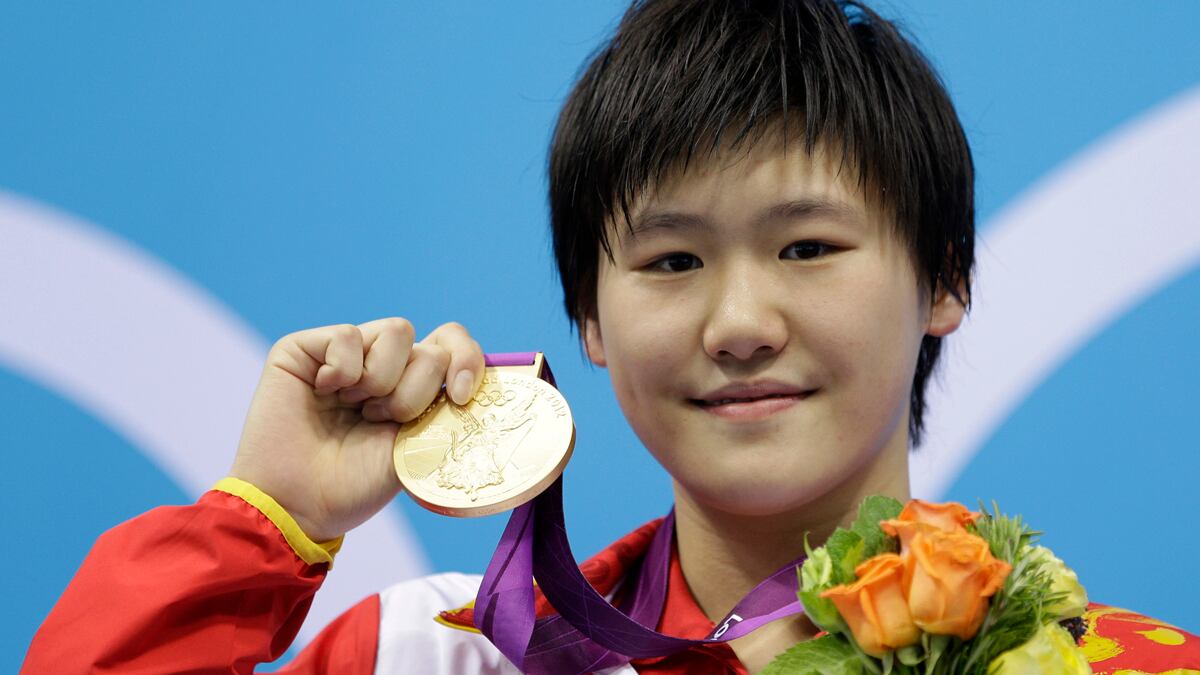Last week the world’s media suddenly became stirred up about the feats of the 16-year-old Chinese swimmer Ye Shiwen in the individual medley events at the London Olympics. Her winning time of 4m 28.43s in the 400-meter medley final took 3.3 seconds from her best time, set in the heats, with an impressively fast last 50 meters—faster than the last length swum by the men’s gold medallist, Ryan Lochte. Some commentators have claimed that such huge progress is suspicious while others have pointed out that 16-year-old age group competitors often take huge chunks off their best times. It may be illuminating to look at the situation more quantitatively to see what margins of record improvements tend to look like in swimming and track athletics as Usain Bolt prepares to race Yohan Blake this weekend.

Swimming is the most technically complex of Olympic sports with the greatest scope for science to drive improvements. Since 1968, the men’s 400m running world record has only improved by a miserly 0.6 sec to 43.2 sec but the 100m swimming record has advanced by a massive 5.3 sec to 46.9 sec. This dramatic improvement is due to detailed understanding of how best to move through water. Big improvements can be made by good scientific input into details of stroke action, finger spacing, turns, body shape and streamlining. Before last year the average life of a swimming world record was 13 months for men and just 8 months for the women. Compare that with track and field where it is 9 years for a men’s record and nearly 15 years for a women’s record—such is the sad legacy of inadequate drug testing for male growth hormone and other drugs taken by East German and other athletes before 1984.
One of the striking things about the swimming during the past week has been the absence of the usual sweep of world records in every event. This slowdown is mainly due to record catch up after the unbridled use of hydrophobic polyurethane swim suits up until their ban in 2010.
Let’s look at some percentage improvements to get a feel for what we should expect when world records are set. Ye’s 3.3s improvement in the 400m medley was a 1.2 percent improvement on her previous best. As an improvement on the previous world record of 4m 29.45 set by Stephanie Rice in Beijing, it is merely a 0.38 percent gain. If she repeated the 1.2 percent next time, the record would drop to 4m 25.18s.
This does not look out of the ordinary in sport. In 2009, Usain Bolt improved the 100m track record by 0.10s to 9.58s. That is a 1.03 percent improvement. In 1996, Michael Johnson improved the 200m world record by a huge 0.34s to 19.32s: that’s a 1.7 percent gain.

It is interesting to compare these routine percentage gains with those achieved in performances known to be odd for various reasons. The women’s world 100m track record of 10.49s set by Florence Griffiths Joyner (‘Flo-Jo’) in the semi-finals of the U.S. Olympic track and field trials in 1988 was a 0.27s improvement over the old record: that’s a massive 2.5 percent improvement. This record is treated with great suspicion. There are good reasons to believe that the zero wind measurement recorded against it was a consequence of a failed wind gauge because other events were experiencing 5 m/s following winds at the same time. A maximum of 2 m/s is allowed for record purposes. The real world record is probably the 10.61s she ran the following day in the final; that was a 1.03 percent improvement on the old record and in line with usual record progression. Her world 200m record of 21.34s, set the following month at the Seoul Olympics, on the other hand, amounted to a very large1.7 percent improvement.
In the 90s there was a succession of suspiciously fast world records by Chinese female track athletes at all distances from 1500m to 10,000m. These have subsequently proved unapproachable by other athletes. As the most suspicious example, take the 10,000m record of Wang Junxia of 29m 31.78s set in 1993. This was a 42 second improvement on the previous record held by the great Norwegian runner, Ingrid Kristiansen: that’s a 2.3 percent improvement and still 22 seconds better than the next fastest run in 2009.
Overall, we see that Ye’s improvement is not extraordinary when compared with the progress of other record breakers who are regarded as entirely respectable. But once improvements start to go above above 2 percent, then alarm bells should ring.





